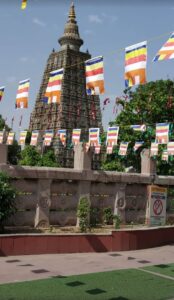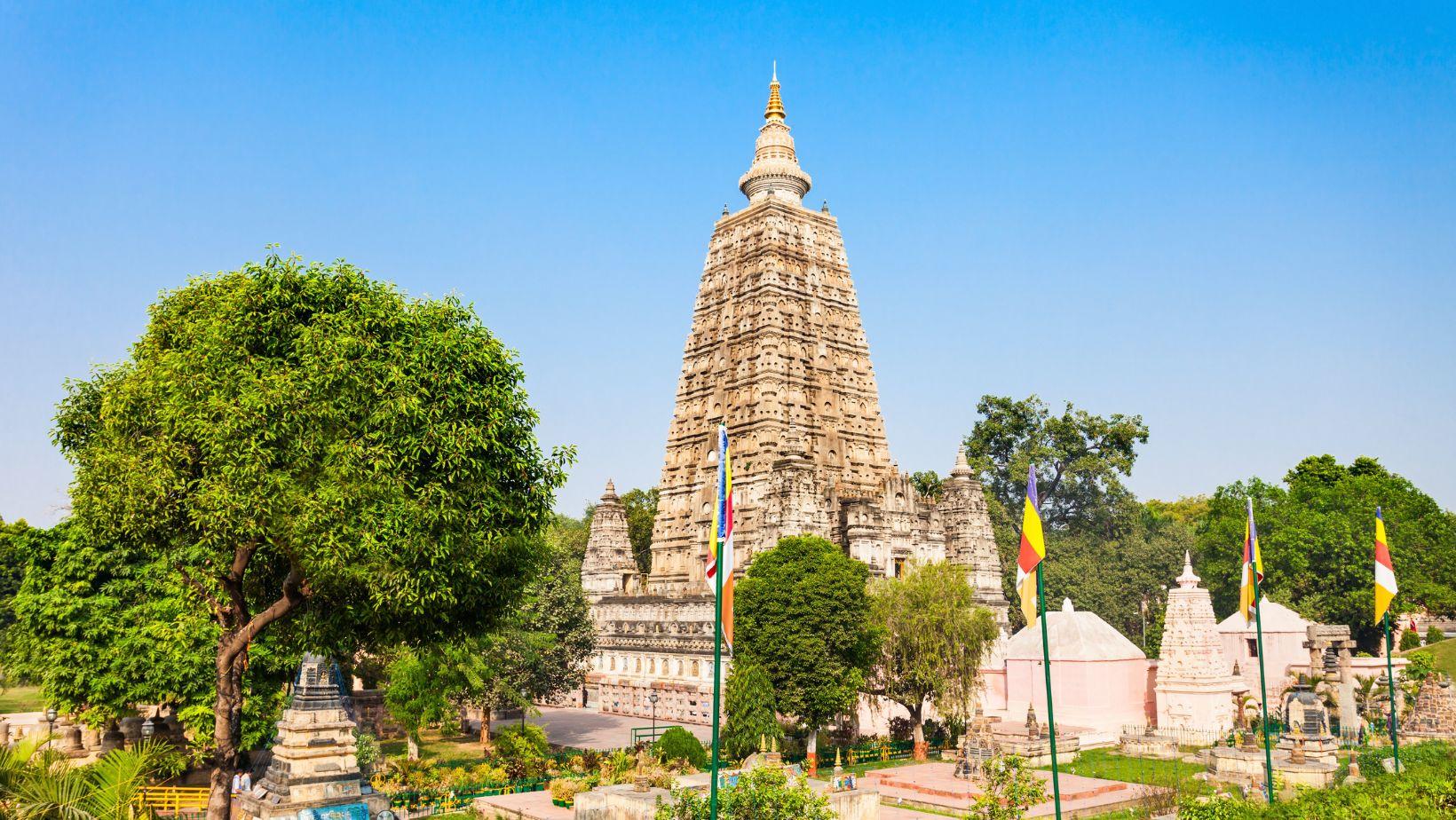The Mahabodhi Temple, a beacon of peace and enlightenment, stands in the sacred city of Bodh Gaya, India. Revered as the site where Prince Siddhartha attained enlightenment under the Bodhi tree and became the Buddha, this temple is one of the holiest Buddhist shrines in the world. For centuries, pilgrims from across the globe have visited this revered site, seeking solace, inspiration, and spiritual awakening. However, beyond its spiritual significance lies a turbulent history marked by a struggle for control, justice, and religious harmony.
The Sacred Origins and the Passing of Time
The Mahabodhi Temple’s origins date back to the 3rd century BCE when Emperor Ashoka, a devout follower of Buddhism, erected a shrine at the site of Buddha’s enlightenment. Over time, it was transformed into an architectural marvel, reflecting the essence of Buddhist philosophy. However, the temple’s history took a dark turn as Buddhism gradually declined in India. With the resurgence of Hinduism and the invasion of foreign rulers, Buddhist monasteries were abandoned, and the Mahabodhi Temple fell into neglect.
By the medieval period, Hindu monks from the Shaivite sect took over the temple’s management, incorporating elements of their own traditions into the site’s rituals. For centuries, the temple remained under the control of Hindu priests, with Buddhist pilgrims allowed only limited access. This situation sowed the seeds of a prolonged conflict that would manifest in a significant protest centuries later.
The Awakening: A Struggle for Justice
The late 19th and early 20th centuries saw a revival of Buddhism in India, spearheaded by figures like Anagarika Dharmapala, a Sri Lankan Buddhist reformer. Upon visiting the Mahabodhi Temple in the 1890s, Dharmapala was deeply distressed by the Hindu control over the site. He viewed it as an injustice that the most sacred Buddhist temple in the world was not administered by Buddhists. Thus began his tireless campaign to reclaim the temple for Buddhists.
His efforts led to widespread protests, advocacy, and even legal battles. Dharmapala formed the Mahabodhi Society in 1891, which aimed to restore the temple’s Buddhist heritage. He faced immense opposition from Hindu priests, local authorities, and even colonial administrators who hesitated to intervene in religious affairs. The struggle intensified as Dharmapala’s efforts gained international support, drawing Buddhist leaders from Burma, Sri Lanka, Thailand, and Japan into the movement.
Despite the mounting pressure, success did not come easily. Decades passed, and Dharmapala died in 1933 without seeing his dream fulfilled. However, his legacy endured, and the fight for the temple’s rightful administration continued.

The Protest That Shook India
The most significant turning point in the Mahabodhi Temple’s history came in the 1940s and 1950s when the Indian government was urged to take action. As Buddhism saw a resurgence in India, thanks in part to the efforts of Dr. B.R. Ambedkar, the demand for Buddhist control over the temple gained momentum. The debate was not merely about religious control; it was a question of historical justice and cultural restoration.
Mass protests erupted, with Buddhist monks, scholars, and lay followers taking to the streets, demanding that the temple be handed over to a Buddhist governing body. Demonstrations were held in Bodh Gaya, New Delhi, and Kolkata, where thousands of protestors gathered, chanting slogans for justice.
A particularly dramatic moment came in 1953 when a group of monks staged a peaceful sit-in at the temple premises, refusing to leave until their demands were met. The protest attracted global attention, with Buddhist nations sending delegations to India to press for a resolution. The movement sparked debates in Parliament, with leaders like Jawaharlal Nehru acknowledging the sensitivity of the issue but struggling to find a balanced solution.
The Turning Point: The 1959 Act
The relentless struggle finally bore fruit in 1959 when the Bihar State Government introduced the Bodh Gaya Temple Act. The Act established a committee to manage the temple, composed of both Hindus and Buddhists. While the committee structure did not grant full control to Buddhists, it was a significant step towards shared administration. The Act mandated that the committee consist of four Hindu and four Buddhist members, with the District Magistrate of Gaya serving as its chairperson, ensuring an official oversight mechanism.
Though this decision did not completely satisfy Buddhist activists, it was a compromise that brought a semblance of justice and acknowledgment of the temple’s Buddhist origins. The protests eventually subsided, but the debate over temple control remained a subject of discussion in Buddhist and legal circles.
Echoes of Protest in Modern Times
Even in the 21st century, the issue of the Mahabodhi Temple’s governance has not completely faded. Buddhist organizations continue to advocate for full control, arguing that a sacred Buddhist site should be entirely managed by Buddhists. Periodic protests and petitions have been filed, seeking amendments to the 1959 Act.
In 2013, the temple faced another dark chapter when a series of bomb blasts occurred within its premises, sending shockwaves through the Buddhist community worldwide. Though the attack was linked to terrorist activities rather than religious disputes, it reignited discussions on the temple’s security and administration.
Despite these challenges, the Mahabodhi Temple remains a powerful symbol of enlightenment and perseverance. Millions of pilgrims visit every year, meditating under the sacred Bodhi tree and paying homage to the Buddha’s teachings. The temple, with its towering spire and intricate carvings, stands as a testament to the resilience of faith and the enduring struggle for justice.
Conclusion: A Legacy of Devotion and Struggle
The Mahabodhi Temple’s history is not just a story of a sacred monument; it is a narrative of faith, conflict, and the relentless pursuit of justice. The protests that shaped its governance reflect a deeper struggle—one that intertwines religion, history, and identity.
The voices of Anagarika Dharmapala, the countless monks, scholars, and devotees who fought for the temple’s rightful place in Buddhist hands, continue to echo in the hallowed halls of Mahabodhi. Their sacrifices, protests, and unwavering commitment ensured that the temple remains a place of reverence and pilgrimage for Buddhists worldwide.
As the sun sets over Bodh Gaya, casting a golden glow over the Mahabodhi Temple, one cannot help but feel the weight of history in its silent walls. It is a reminder that the pursuit of justice, though arduous, is never in vain. The Mahabodhi Temple stands today not just as a place of worship but as a testament to the power of faith, unity, and perseverance.

